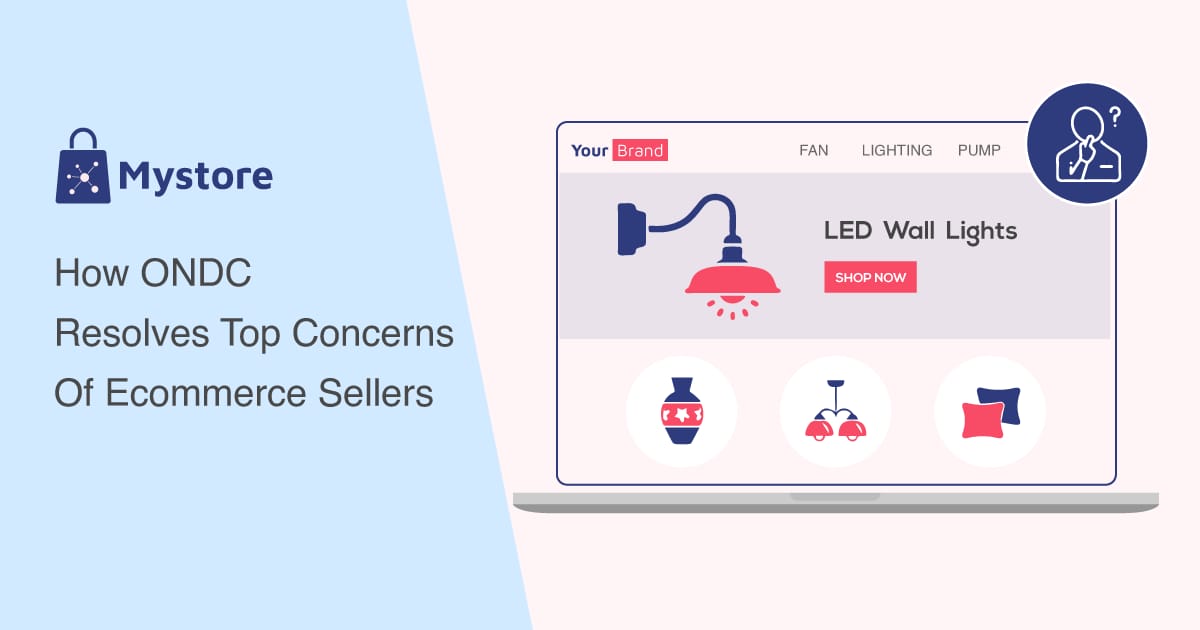For most e-sellers in India, online shopping has changed how their entire business operates. Brick-and-mortar businesses see eCommerce as a one-way ticket to exponential brand growth, and rightly so. What was once an unreachable audience base is now within their grasp because renowned eCommerce giants provide sellers with the platform to sell products to consumers. With so many upsides to it, you may also want to dip your toes in this lucrative industry, right?
Well, there's a catch. While thousands of Indian eCommerce companies are enlisted on the NASDAQ today, that doesn't paint the whole picture. Many Indian eCommerce operators are still struggling to unlock the true potential of their existing storefronts.
Table of Contents
5 problems faced by marketplace sellers
From limited visibility to lack of transparency, here are the 5 main issues that Indian sellers experience when dealing with so-called "eCommerce giants":
1. Costly commission charges (CCC)
It's no secret that the eCommerce market in India until recently was dominated by a duopoly. That essentially meant that the profitability of shop owners and SMEs in India was primarily influenced by a couple of giant enterprises. Not only their commission rates are high (between 25%-35% of total revenues), but they lack transparency. Many local vendors have found it challenging to profit after paying off their commissions and operating costs.
2. Preferential/biased ranking algorithms
If you're wondering why your e-store gains minimal traction while the so-called "big players" hog all the limelight, then you're not alone. The methods or approaches that companies use to rank online sellers is a tightly-kept secret. The algorithms that are implemented in ranking vendors always seem to promote the same big players.
What's more, on top of high commission rates, sellers must also pay for the advertisements to promote their brands. Another major issue that Indian shopkeepers complain about is “self-preferencing”. Companies take actions that specifically cater to a small portion of vendors while discarding the rest. As long as the "blue-collar" brands dominate online traffic, pan-India shopkeepers will continue to feel marginalised.
3. Non-negotiable policies
The most frustrating thing about selling on large eCommerce platforms is that the seller has no say in how the sales policies or contractual agreements are laid out. These companies mainly adopt a "take it or leave it" approach when onboarding a nondescript vendor.
Most e-sellers are not in a position to demand flexible policies concerning logistics or general practices. Getting out of contractual lock-ins can often be tiresome and expensive. For this reason, many sellers think better of it and refrain from switching platforms despite problems.
4. Limited customer reach or visibility
Frequently, store owners complain that their stores fail to show up on result pages. Similarly, a seller might only be visible across some platforms thus keeping their brand name from reaching the desired audience. How are they expected to grow when they don’t even have access to the entire customer base?
To deal with the problem of poor visibility, the Indian government recently launched the ONDC Network as a seller-friendly network to democratise the digital commerce landscape. Sellers from all business verticals - distributors, B2C, D2C, service providers, etc. can connect with their target audience on the open digital network.
5. Ratings and reviews not transferable
Sellers who want to leave the existing platform have to be careful that their work doesn’t go to waste. SMBs are often scared to switch to a new platform as it usually results in them losing all their reviews and ratings. This essentially ties the sellers down to that one eCommerce outlet. More than 50% of customers only trust an online seller if they can read reviews about their specific services and make an informed decision. SMBs need a unified rating platform, which is precisely what ONDC Network provides.
ONDC Network And The Vision Behind It
As we have learnt, traditional eCommerce is far from perfect and often keeps the minor players on the periphery. Not to worry, however, there is light at the end of the tunnel!
The Open Network for Digital Commerce Protocol (ONDC Network) promises to tilt the power back to the side of regular Indian sellers. The government-led initiative has already shown tremendous potential by allowing every business entity, irrespective of size, to pitch to its target audience without any shady policies.
Since the concept is still in its infancy, many wrongly assume that the ONDC Network is a government-led regulatory body that aims to absorb or aggregate all shopping platforms into one. That’s a completely false narrative. The whole vision with ONDC Network is to bring small businesses operating outside the eCommerce bubble into the vast ecommerce framework of India.
Let's evaluate the change ONDC Network is capable of bringing in the Indian bazaars. To better understand the concept, we take the example of the Indian Kirana market.
In India, more than 1.1 crores of local Kirana shops account for over 80% of the retail industry. However, since most of these businesses lack a digital presence, there is considerable scope for them to grow exponentially and be a part of the eCommerce revolution. Less than 25% of internet users in India are also active online shoppers, yet India had the third-largest online shopping base globally in 2021.
Now imagine if all the Kirana shops were selling digitally, and more internet users could acquire products/services directly from them? That's the vision behind ONDC Network- to break the eCommerce monopolisation and bring the power back to the smaller firms. Not only will it be profitable to the sellers and buyers alike, but it will also strengthen the Indian economy as more businesses adopt digital commerce.
What Makes The ONDC Network A Masterstroke?
With the ONDC network, everyday shopkeepers can think big! They can operate like a legitimate e-store without dealing with dodgy policies or harsh commission rates that are commonplace with eCommerce giants. The ONDC Network India will help small businesses expand online and support inclusivity, accessibility, and compatibility. The significant benefit is that everyone can join the ONDC Network, including the smallest players catering to a niche audience.
Consumers and businesses can compete with the biggest e-commerce platforms on a level playing field, and those offering better service will prosper - how it was always meant to be. “Mission ONDC Network” is all about giving sellers a software-based solution they can use to build a digital presence with ease. Even a novice can conduct general ecommerce tasks such as catalogue management, query resolution, product updates, etc. using the Mystore seller app.
Registering as an the ONDC Network-affiliated seller using Mystore is easy and free. No subscription fee is involved, and users get instant access to a seamless admin dashboard that helps sellers drive sales and manage business processes with ease.
Register on ONDC Network with Mystore Seller App
Mystore is a powerful solution built on MACH architecture that lets sellers create connect with their target audience via ONDC Network. Mystore is powered by StoreHippo - India’s leading SaaS-based eCommerce service provider. Mystore seller app is enriched with functionalities and tools that you will need throughout your selling journey.
Sellers can upload their entire catalogues on Mystore in just a few clicks and make their entire stock discoverable to the ONDC Network-connected audience. What makes Mystore the most seller-friendly solution is that there are no additional operating costs involved. You only have to pay a nominal referral fee per order which is 7 to 10 times lower than the standard commission rates with other eCommerce platforms.
Adding products, establishing prices & discounts, tracking orders, responding to queries, adding GST-compliant tax rules - it’s all possible through Mystore’s UI admin dashboard.
Want to write your own success story with Mystore Seller App? Register today in just 3 easy steps and start selling online right away.



